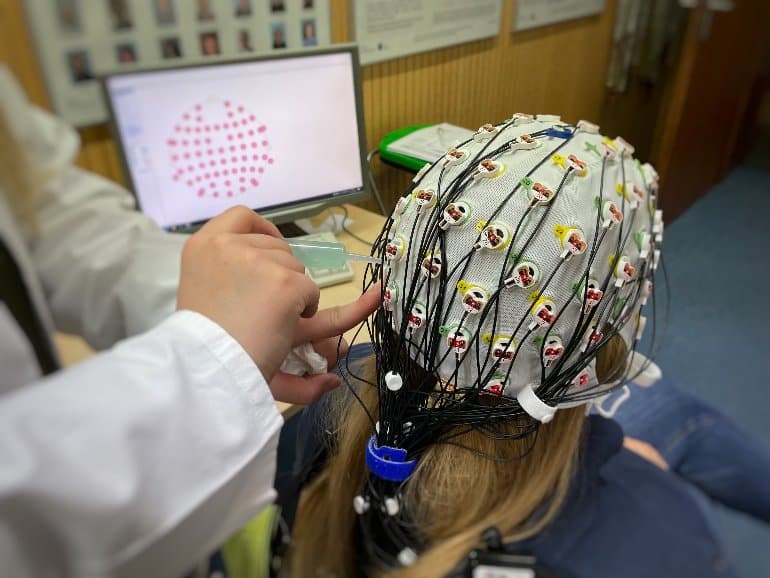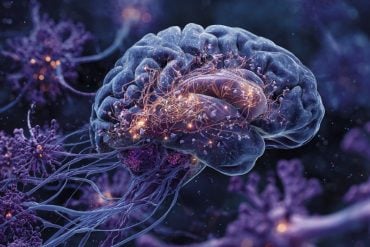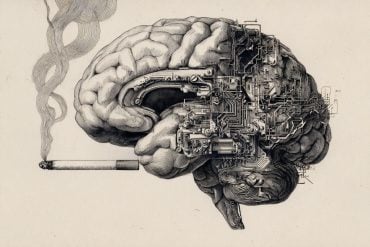Summary: Working memory stores different types of information in flexible codes which provide optimal outcomes for all possible courses of action.
Source: IfADo
Working memory, also called short-term memory, was long theorized to have the core task of actively storing information over a short period of time. Nowadays, working memory is considered more complex, because processes such as information selection and the planning of future actions run in parallel.
In a recent study, a group of researchers at Leibniz Research Center for Working Environment and Human Factors at TU Dortmund (IfADo) shed light on the prerequisites for the initiation of motor preparation processes in working memory. They came to the conclusion that the brain prepares options for action as early as possible to enable the best possible condition for the execution of an action.
In everyday life, we often have to react to stimuli in our environment. If a ball flies towards us while we are walking in the park, we dodge or catch it. However, what feels natural and automatic requires a complex set of cognitive processes ranging from sensory perception to motor planning to motor execution.
Working memory plays a central role in these cognitive processes, as it can be defined as the interface between this past sensory information, cognitive operations and goal-directed action.
From this past and stored information, the working memory tries to filter out the relevant information. Based on two experiments in which neural oscillations were measured using EEG, the researchers investigated the role of preparatory motor plans in focusing attention in working memory.
Preparation for the action
This study, now published in NeuroImage, provided the first evidence that working memory stores different types of information in flexible codes and thus provides optimal preparation for all possible courses of action.

What we store in working memory is not only the mental representation of past sensory impressions. It also includes information about what current goal we are pursuing or what future action or mental operation we want to perform. The contents of the working memory can therefore not only be seen as copies of sensory information, but rather as a mental planner that selects the best option for the situation at hand from all the options.
Study design
In the first experiment, participants were given the task of remembering the position or orientation of an object and then replaying it. It was important here that the task was precisely defined. The experiment showed that the shift of attention within an object was accompanied by preparations for action in the working memory. So far, this shift of attention has only been observed between object and memory representation.
The design of the second experiment was very similar to the first. The difference was that the participants did not know the task at first and had to remember all the properties of the object shown. Only then were the participants given the task. The EEG measurement in the second experiment showed that the preparation for action starts in the working memory before the task is known.
About this memory research news
Author: Press Office
Source: IfADo
Contact: Press Office – IfADo
Image: The image is credited to IfADo / Anne Gregory
Original Research: Open access.
“Preparing for the unknown: How working memory provides a link between perception and anticipated action” by Marlene Rösner et al. NeuroImage
Abstract
Preparing for the unknown: How working memory provides a link between perception and anticipated action
What mechanisms underlie the transfer of a working memory representation into a higher-level code for guiding future actions?
Electrophysiological correlates of attentional selection and motor preparation processes within working memory were investigated in two retrospective cuing tasks.
In the first experiment, participants stored the orientation and location of a grating. Subsequent feature cues (selective vs. neutral) indicated which feature would be the target for later report.
The oscillatory response in the mu and beta frequency range with an estimated source in the sensorimotor cortex contralateral to the responding hand was used as correlate of motor preparation. Mu/beta suppression was stronger following the selective feature cues compared to the neutral cue, demonstrating that purely feature-based selection is sufficient to form a prospective motor plan.
In the second experiment, another retrospective cue was included to study whether knowledge of the task at hand is necessary to initiate motor preparation.
Following the feature cue, participants were cued to either compare the stored feature(s) to a probe stimulus (recognition task) or to adjust the memory probe to match the target feature (continuous report task).
An analogous suppression of mu oscillations was observed following a selective feature cue, even ahead of task specification. Further, a subsequent selective task cue again elicited a mu/beta suppression, which was stronger after a continuous report task cue.
This indicates that working memory is able to flexibly store different types of information in higher-level mental codes to provide optimal prerequisites for all required action possibilities.






